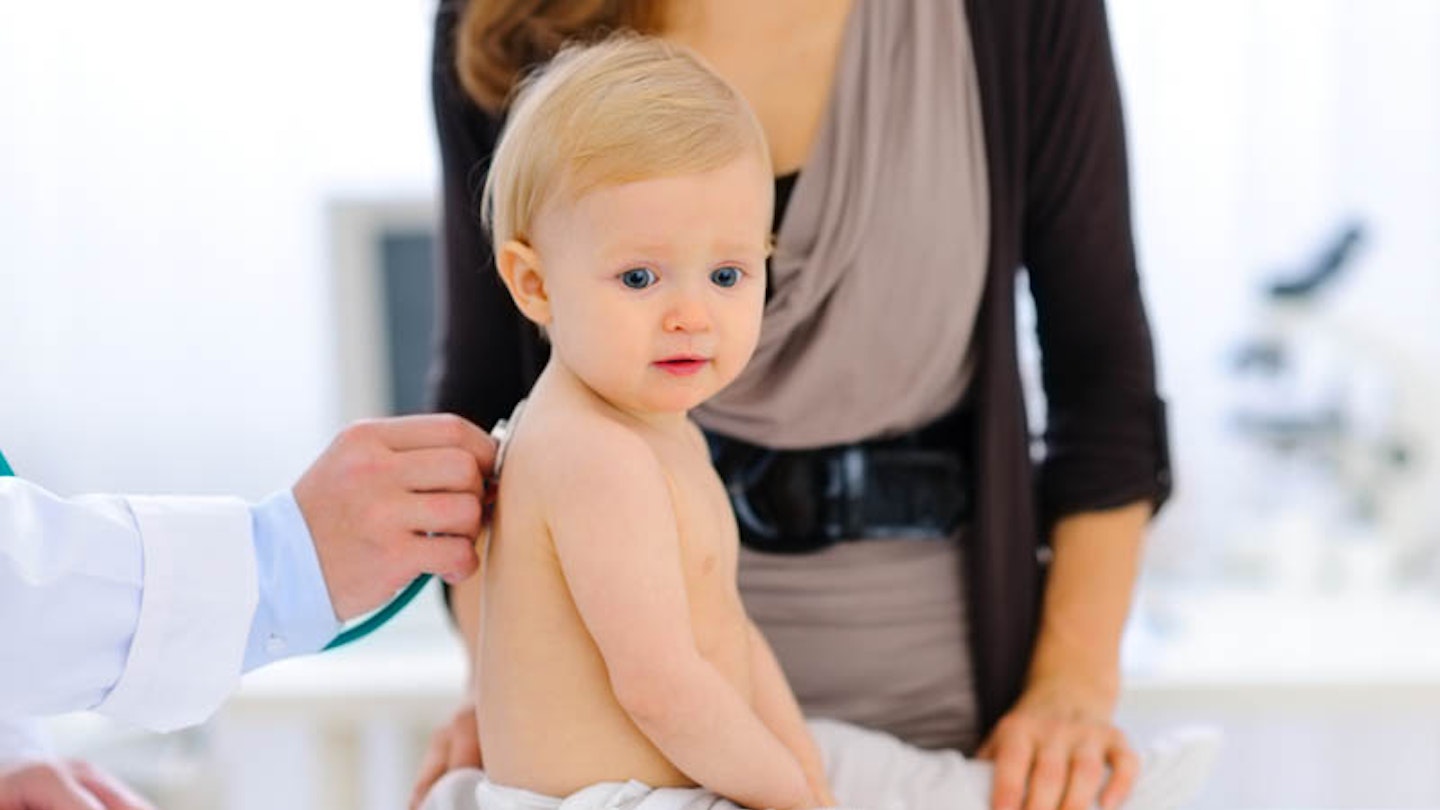If your baby’s struggling to breathe and has a wheezy cough, he could have bronchiolitis
What is bronchiolitis?
Bronchiolitis is a common infection that can cause breathing problems and a cough. It affects around a third of babies in their first year, and usually within the first six months of their life.
‘It develops in the lower airways in your baby’s lungs, making them swollen and inflamed and reducing the flow of air, causing a wheezy cough,’ says Dr Jeremy Hull, a paediatric respiratory specialist at The Children’s Hospital in Oxford.
Your baby is most likely to catch bronchiolitis between October and March when more viruses are circulating.
What causes bronchiolitis?
The same virus that can cause colds and ear infections. ‘This means that your baby may develop the cough alongside or after suffering a cold,’ says Jeremy.
‘By the age of two, almost all babies will have been infected with this bug and around 40% of those will have had bronchiolitis.’
This virus is spread easily when droplets containing the virus are coughed or sneezed and your baby breathes them in.
‘Try to minimise the risk of spreading the virus by catching sneezes in a tissue and washing your hands regularly,’ says Dr Graham Archard from the Royal College of GPs.
What are the symptoms of bronchiolitis?
The main symptom of bronchiolitis is a dry, wheezy cough. ‘Your baby’s breathing may be slightly laboured or fast,’ says Graham.
‘He could also have typical cold symptoms such as a blocked or runny nose, fever and difficulty feeding.’ In serious cases of bronchiolitis, you may notice that your baby is sucking in his chest and stomach as he breathes.
How can you treat bronchiolitis?
As bronchiolitis is caused by a virus, you can’t treat the illness itself, but you can treat some of the symptoms.
‘If your baby is feeding less, give him a smaller volume of milk or food, more frequently,’ says Jeremy. ‘Think every two hours, instead of every four hours.’ Fever can be reduced with infant paracetamol.
It’s not recommended that you use steam inhalation to treat your baby’s cough, though. ‘There’s little scientific proof that steam can actually help a cough, and it’s risky bringing your baby into contact with hot water,’ says Jeremy.
The illness usually lasts about nine days. It will get worse over three days, remain stable for three days and then start getting better over three days.
See your GP if…
Your baby is struggling to breathe. ‘You should take your baby straight to your doctor if he is flaring his nostrils, seems sleepy and lethargic and has had less than half of his usual amount of milk over the past 24 hours or no wet nappy for six hours or more,’ says Dr Hull.
About one in 50 babies with the condition develop severe bronchiolitis and need hospital care, but in most cases your baby will recover with treatment at home.
For more information visit the More Than a Cold website. Watch the More Than a Cold video below for more info about bronchiolitis.
